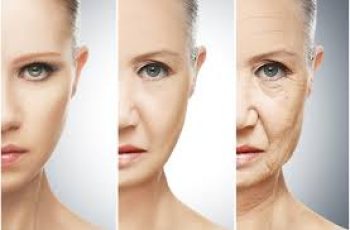Extracellular Vesicles in Skin Care
What are Extracellular Vesicles?
You may have heard about extracellular vesicles (EVs) being harnessed to rejuvenate skin. What are extracellular vesicles? Are they harmful or helpful? Why are extracellular vesicles used in skin care products?
EVs are lipid bilayer bound vesicles secreted by cells. EVs can cross from the dermis to epidermis and function as a conduit of communication between keratinocytes, melanocytes, and fibroblasts.[i]
EVs can carry multiple types of cargo between cells such as:
matrix metalloproteinases (MMPs)
inflammatory cytokines,
growth factors,
mRNA,
miRNA,
mitochondrial DNA
genomic DNA
Extracellular vesicles are an advanced way for cells to communicate with each other by transferring RNA, growth factors and other signals to each other. EVs can carry multiple types of cargo between cells such as proteases (MMPs), inflammatory cytokines, growth factors, and functional RNA. EVs can deliver miRNA from SASPs to surrounding cells. They have even been found to carry mitochondrial DNA and genomic DNA.[ii]
There are numerous EV subtypes.
Exosomes are a type of Extracellular Vesicle.
Exosomes are the smallest and most studied type of EV.
What is in extracellular vesicles?
Extracellular vesicles carry cell communication molecules and RN.
Learn about growth factors, exosomes and stem cells in skin care products at this link.
Are extracellular vesicles in skin care products safe?
These products are the latest technology in skin care products. We do not have a lot of evidence-based research yet. However, the safety of exosomes and extracellular vesicles would depend upon the type of EV and what is in it.
Dangers of EVs
EVs do not always carry desirable signals.
DNA damage results in a p53-dependent increase in EV secretion. (4) These can be harmful.
EVs may be produced after senescence-inducing stimuli.
Senescent cells (SCs) produce EVs that can be harmful. Senescent cells (SCs) are bad for skin because they secrete matrix metalloproteinases (MMPs) such as collagenase that damage and ages skin. SCs use EVs to age the cells around them.
EVs derived from senescent cells can age skin. This is why the source of EVs and exosomes is so important.
More research on EVs is needed
Stay tuned. We will keep this blog updated as new research is published on EVs.
Benefits of Extracellular Vesicles in Skin Serums and Treatments
EVs have been shown to be increased in older individuals as compared to younger people. (3) EVs are not always good. It depends upon where they come from and what messaging signals they carry.
For EVs to be beneficial to the skin, they must come from the right source. A regenerative tissue such as a platelet is a good source of regenerative EVs that will renew skin.
One example of a product with platelet-derived exosomes is Plated Skin Science Intense Serum.
Click this link to learn more about exosomes in skin care.
Confused about how to find the best skin care products to rejuvenate your skin? We can help! All you need to do is shop by your Baumann Skin Type.
DQH Can I use salicylic acid first and then vitamin C?
It’s easy to create a skincare routine, but knowing how to use it is another thing entirely. In most cases, if you’re not getting the desired skin results, it could be due to the layering of conflicting ingredients. So, is it possible that salicylic acid and vitamin C are such ingredients? Or are these active ingredients the duo that’s been missing from your skincare routine? If you want answers, stick around because today we are going to explain the benefits of salicylic acid and vitamin C and how they can be used in your daily life.
What are the benefits of salicylic acid for skin?
Salicylic acid is one of the most commonly used beta hydroxy acids and is favored by many people with oily, acne-prone skin. This acid is derived from willow bark, and unlike its water-soluble relatives (called alpha-hydroxy acids), salicylic acid is oil-soluble, which means it can penetrate deeper into the lower layers of the skin. Once it reaches the lower layers, it can help unclog pores of excess sebum, dirt, bacteria, debris, and impurities. This results in clearer skin tones and greater definition.
Not only does salicylic acid benefit the underlying layers, but the outer surface of the skin benefits as well. When applied to the skin, salicylic acid removes the buildup of dead skin cells. This is accomplished by breaking the bonds that hold dead cells to the surface. Over time, this can cause the complexion to look dull and prone to acne, blackheads, and other blemishes.
If you’d like to learn more about salicylic acid and how it can improve your skin, check out this dedicated blog post from a beauty insider.
What are the benefits of vitamin C for skin?
Vitamin C is considered one of the most powerful antioxidants, which means it is very effective at fighting free radicals and preventing them from causing further skin damage. Examples of free radicals include pollution, central heating, UV rays and harsh climate. They attack proteins, fats and cell membranes as soon as they come into contact with the skin, causing signs of premature aging such as fine lines and wrinkles as well as hyperpigmentation, flaky patches of skin and loss of elasticity.
Many people usually prefer to use vitamin C in their morning routine as this ingredient gives the complexion a radiant glow. You’ll also find that vitamin C can target areas of hyperpigmentation, plumping the skin and reducing the appearance of fine lines and wrinkles.
The thing about vitamin C is that there are a lot of outdated studies going back to the 1950s that describe vitamin C as an unstable skin component. Thanks to improvements in modern technology, this is no longer the case as all products now contain a stable form of vitamin C.
Visit The Beauty Insider to learn more about vitamin C. So please check out our blog post.
Can I use salicylic acid first and then vitamin C?
Yes, you absolutely can. In fact, it’s thought that using salicylic acid before using vitamin C ensures it penetrates faster and works faster.
This is an efficient way to utilize two power sources, and the reason has to do with pH. For example, the skin’s natural pH is about 4.7, making it slightly acidic. Salicylic acid and vitamin C are also both acidic, and you’ll find that vitamin C is absorbed quickly into the skin. Therefore, using salicylic acid beforehand can increase the acidity of the skin and allow vitamin C to penetrate into the skin faster.
While this is considered an effective way to combine two powerful ingredients, you need to be aware of your skin type and how it reacts to certain active ingredients. Even people with perfect, normal skin can experience skin sensitivity and irritation. Therefore, always consult a doctor or dermatologist before using any new products on your skin.
It’s also important to follow skin application rules. In this case, you need to use the product correctly to ensure you get the best results for your skin. If you’re not sure what I mean, the basic rule for skin is to start with the thinnest consistency and work your way up to the thickest consistency. This prevents a barrier from forming on the surface, preventing other active ingredients from penetrating the skin.
Can I use salicylic acid at night and vitamin C in the morning?
Yes, absolutely, this is considered the most effective way to get returns without any adverse side effects. This is because there is enough time between applications to ensure that the skin’s pH levels return to balance.
You’ll also find that Vitamin C is rich in antioxidants and is perfect for use in the morning to ensure your skin is protected and looking its healthiest. Due to the small size of salicylic acid molecules, it is an acid that is able to reach the deepest parts of the skin. While this is effective at keeping skin clear, it also increases the risk of irritation and photosensitivity. Therefore, many people prefer to use powerful BHAs in their evening routine without exposure to UV rays, pollution, or harsh weather.
Warning: If you avoid using sunscreen every day, none of these ingredients will do what your skin needs. The combination of chemical peels and powerful ingredients increases the risk of further damage to the skin’s surface. Use SPF 50 every day to keep your skin protected and your lipid barrier healthy, even on cloudy days, keeping your skin in top condition.



